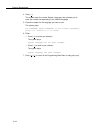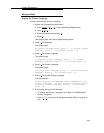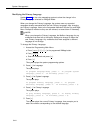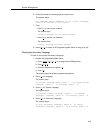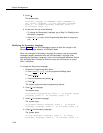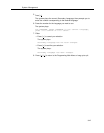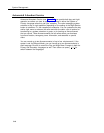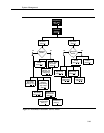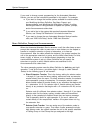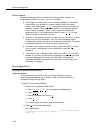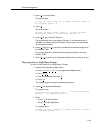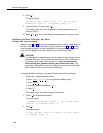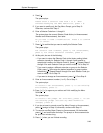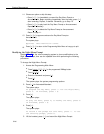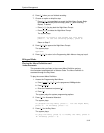
System Management
If you need to change current programming for the Automated Attendant
Service, you can use the instructions presented in this section. For example:
■
■
■
If you want to change the transfer options available for outside callers,
use “Modifying the Menu Definition, Day Menu Prompt, and
Announcements” and “Modifying the Night Menu Prompt” for either
Monolingual Mode or Bilingual Mode to update the options, prompts,
and/or Announcements callers hear.
If you add a line to the system that requires Automated Attendant
Service, use “Group Call Distribution” to include the new line.
If you want to change the way Automated Attendant Service handles
calls, use “VMS Hunt Delay” and/or “VMS Hunt Schedule.”
Menu Definition, Prompt, and Announcements
When the Automated Attendant Service answers a call, the caller hears a menu
prompt that requests the caller to press one or more buttons on the dialpad to
transfer to a specific extension or group of extensions, or to hear an
Announcement. After the caller presses the button(s), the system transfers the
call to the appropriate extension or group, and the caller hears Music On Hold,
tones, ringing, or silence, or an Announcement (depending on how the
communications system is set up). Menu Definition lets you specify the
extensions or groups to which outside callers are transferred or the
Announcements that callers hear.
The voice messaging system uses the Menu Definition for both day and night
operation. To set up the menu, you define digits 1 through 9, called Selector
Codes, for the following types of call transfer:
■
■
Direct Extension Transfer. This is the factory setting for selector codes
1 through 8. If you use the factory setting, callers can enter an extension
number directly from the menu. For direct extension transfer, the selector
code represents a range of extensions. For example, selector code 1
allows outside callers to transfer directly to any extension that begins with
a 1—extensions 10–19. For selector code 2, outside callers can transfer
directly to any extension that begins with a 2—extensions 20–29, and so
on.
Selector code 9 is different from selector codes 1 through 8. If you leave
selector code 9 at the factory setting, outside callers are transferred
directly to the receptionist’s mailbox where they can leave a message.
This is especially useful for night operation. If you use it, callers are
routed directly to the receptionist’s mailbox—the system does not ring
the extension first.
Selector Code Transfer. You can assign any of the selector codes to
one specific extension or group. Then when a caller presses the single-
digit selector code, the system transfers the call to the specific extension
or Calling Group or Hunt Group that you assigned to that digit.
5-20



